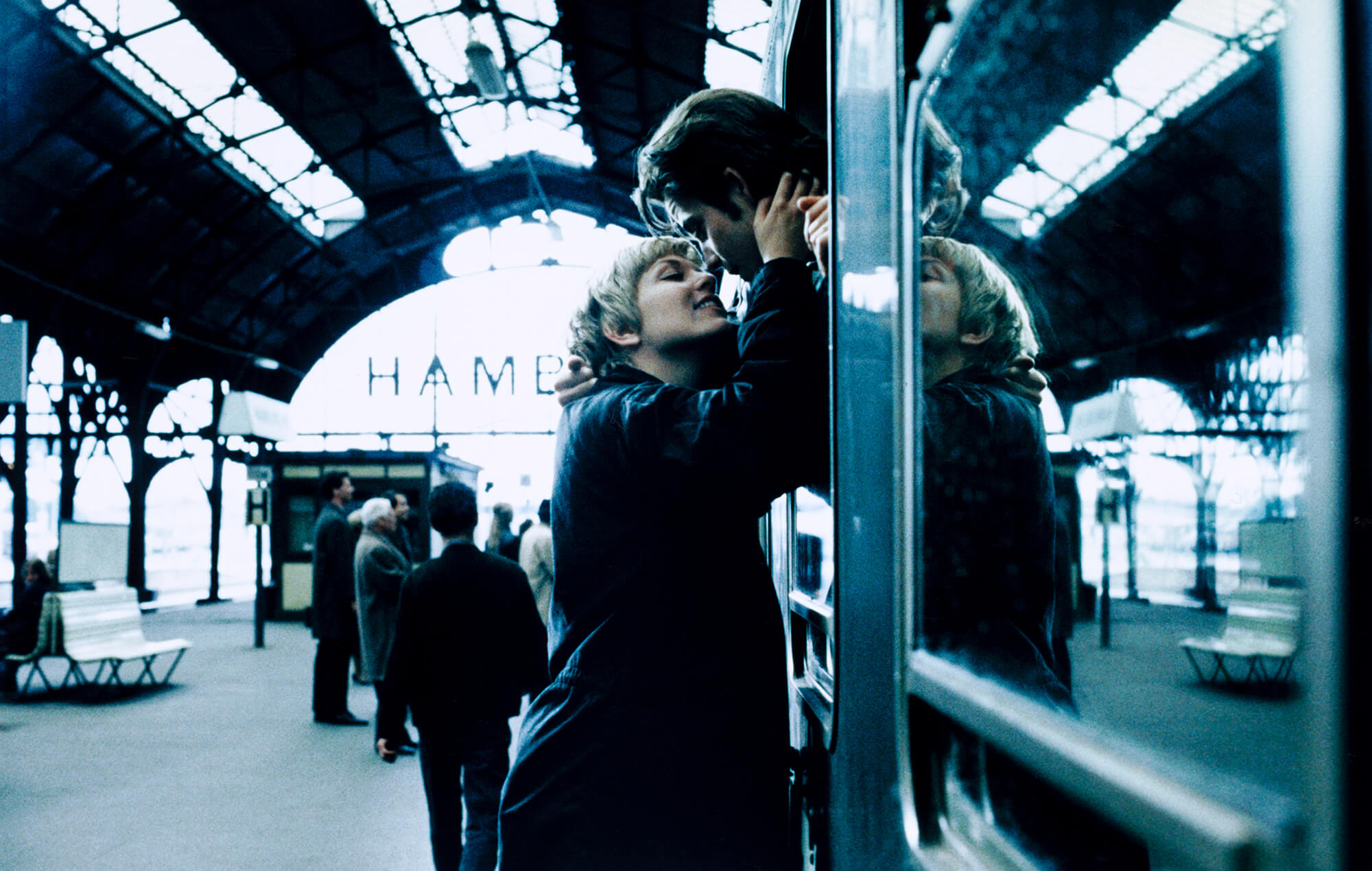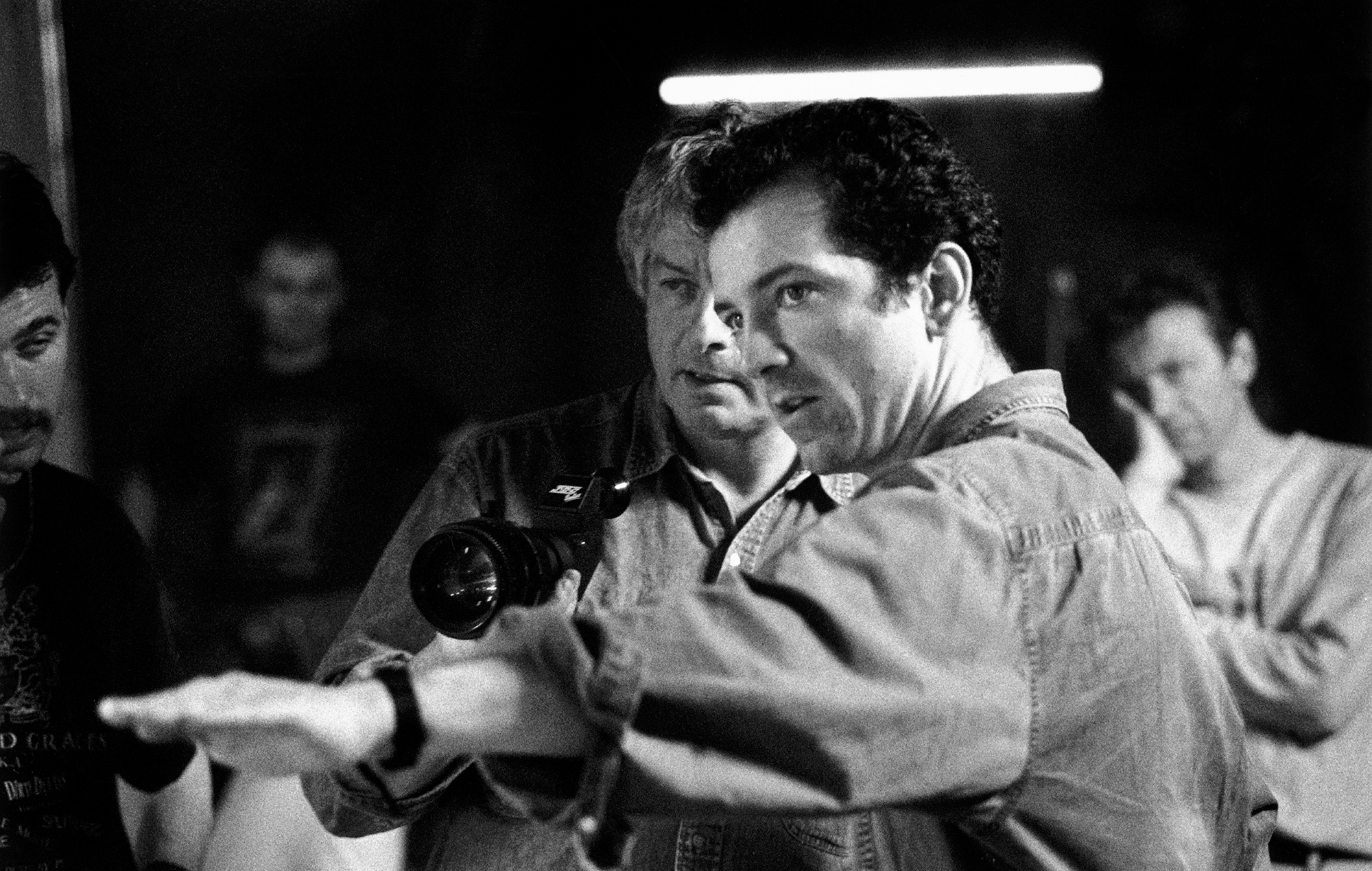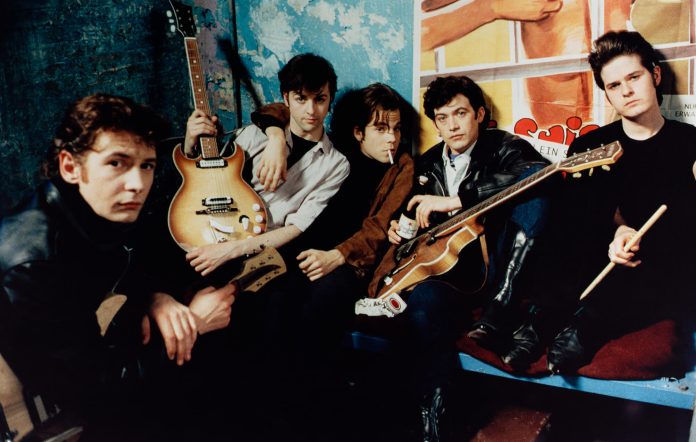Filmmaker Iain Softley, like many growing up in the mid-1960s, found Beatlemania inescapable. “Right at the beginning of primary school, everybody was starting to talk about The Beatles,” the 67-year-old Backbeat director says, recalling the cultural presence and impact of Liverpool’s most famous sons on his childhood. “They were part of my life really from almost, you know, my first memories. Everybody loved them at the time.”
Softley’s 1994 directorial debut details the future Fab Four’s rowdy days as a house band in the beer-soaked, drug-fuelled bars of Hamburg’s notorious red light district, the Reeperbahn. But it isn’t a traditional Beatles biopic. Its focus is on original bass player Stuart Sutcliffe (Stephen Dorff), photographer Astrid Kirchherr (Sheryl Lee), and John Lennon (Ian Hart), the trio forming something verging on a love triangle.
Unless you’re a die-hard Beatles fan, you’re likely to know next to nothing about Lennon’s best mate from those days, and this became Softley’s impetus for directing the film. It began when he chanced upon archived photos while working in Manchester, at Granada Television, where, as Softley explained, the studio has a Beatles archive. Looking through images of the group (then a five-piece), he zeroed in on two figures he didn’t recognise: Sutcliffe and Kirchherr. He found them captivating, describing the young lovers as exuding “super cool” and the photos as “black and white, androgynous, both looking like each other, very European, very sophisticated.” He asked himself: “Why don’t I know more about these people?”

There’s a few candidates often touted for the informal honorific ‘The Fifth Beatle’: manager Brian Epstein, first drummer Pete Best, PR man Derek Taylor. Sutcliffe, however, who died from an aneurysm aged 21 in 1962, played an intriguing role in those early days, and is in with a good shout. He exposed his bandmates to European art and cinema, and took a part in shaping their eventual image in the process. He might have been a rudimentary bassist, but his artistic background (he was an art school graduate and a professional painter) and his cultured air made him and Kirchherr something akin to stylistic gurus, the band’s own Andy Warhols.
Softley felt he could make a film about fate and Sutcliffe’s eventual decision to follow his art and his heart. “He was an artist, first and foremost. He was John Lennon’s best friend. John convinced him to buy a guitar, a bass guitar, and come to Hamburg and join the band. And he loved it, loved being in the band. But, when he and Astrid fell in love, he was faced with the choice. His preference was for this woman, and the love of his life, his painting. And that’s what is at the centre of the drama of the film, that choice. And the cost that has.”
Softley based the script on real events, though sometimes taken out of order for dramatic purposes, “I didn’t really want to invent stuff that never happened,” he tells NME, as well as extensive interviews culled from people around back then, including Kirchherr, the German artist and Kirchherr’s ex-beau Klaus Voormann, and Sutcliffe’s family and friends. A major challenge for the Backbeat director lay in recreating the sweaty atmosphere and surprisingly raw sound The Beatles produced playing their residency at the Kaiserkeller. “Klaus was a musician and when he first heard them playing, he was struck by the power of the music. He told me it was crossed between a sort of house [band] music and punk. And Stuart used to turn his guitar up really loud. Pete Best, who was the drummer at the time, was smashing out the drums. He said it was the most exciting thing he’d ever heard. So I wanted to have that attitude, that excitement, and I wasn’t really that concerned about, you know, trying to imitate a [classic] Beatles sound.”

To recreate such a proto-punk racket, the film’s music composer Don Was (super-producer to The Rolling Stones and Bonnie Raitt) had to form a grunge-rock supergroup to re-record now-classics of early rock ‘n’ roll, the various tunes The Beatles blazed through entertaining nightly drunken crowds. Softley even now seems impressed with this aspect of the film: “We got Dave Grohl, the Nirvana drummer, Thurston Moore from Sonic Youth, and then Mike Mills from R. E. M. to be, you know, to be our band. John Lennon’s [singing] voice was Henry Rollins. And so we, it was basically called a grunge supergroup.”
In 2015, Lennon’s widow Yoko Ono told the world her husband was bisexual. Backbeat – years earlier – if not as explicit regarding Lennon’s sexual fluidity, it certainly explored it as a distinct possibility, such is the intensity shared between John and Stuart. It even affects Paul McCartney, whose big plans for the band threaten to be knocked off course by Lennon’s infatuation. “The film shows you the jealousy, you know, because John was fascinated by, not just by Stuart, but by Astrid as well. So it was taking John’s attention away from Paul, and Paul obviously saw the two of them [Lennon and McCartney] as being at the centre of the band and his ambition for the band was mainly being compromised,” the director puts it.
He adds: “He also, Stuart, was very attractive, and they were very close, and, you know, when you’re kind of like that close, you might be having sex with two different people in the same room, but it means that you’re kind of like sharing that moment in some [symbolic, at least] way. So I think that there’s a kind of [bisexual] element in that.”
‘Backbeat’ celebrates its 30th anniversary with a 35mm screening on 14 June at Picturehouse Central in London
